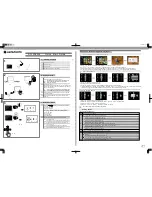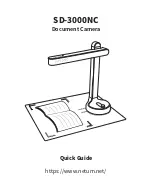
Page 16/89
VIDAR
User Manual
Adaptive Recognition
America
Adaptive Recognition
Hungary
Adaptive Recognition
Nordic
Adaptive Recognition
Singapore
WWW.ADAPTIVERECOGNITION.COM
IP address: The system accepts IPv4 and IPv6 addresses as well.
Type: The range of IP filtering
•
HTTP: the settings are applied to HTTP requests
•
STREAM: the settings are applied to stream requests
•
HTTP+STREAM: the settings are applied to both HTTP and stream requests
Netmask: Subnet mask of the IP address being added. This has to be expressed in dot-decimal, just
like the address itself. (e.g. 255.255.255.0)
After clicking the Add button, the new exception will appear in the BLOCKED/ACCEPTED
ADDRESSES table above the edit fields. The elements of the table can be removed by clicking the
check box of the row and then clicking the Remove button. The above settings (default policy,
exceptions) will not be applied until clicking the Save button.
5.1.5.
ADVANCED CAMERA INTERFACE PROTOCOLS
Enable ONVIF: Checking this checkbox will enable the ONVIF interface of the camera. Please note
that with ONVIF enabled the amount of memory available for image buffering will be smaller.
Enable RTP: Select this option to enable RTP streaming.
Enable NTCIP: Enables the National Transportation Communications for Intelligent Transportation
System (ITS) Protocol (NTCIP) which creates a seamless integration into standardized ITS systems.
For more information on NTCIP, please check the NTCIP Guide in the HELP menu of the web
interface.
HTTPS only: Enables HTTPS protocol which is encrypted using Transport Layer Security (TLS).
Enable SSH: When this box is ticket out, access will be denied through the service port (SSH). When
disabled, the Adaptive Recognition Support will have limited tools to recover the camera when
inaccessible!
Before clicking the Save button, make sure that all settings are configured correctly, an incorrect
setup can block the user from accessing the camera. In this case the
applied.
Summary of Contents for Vidar
Page 1: ......
















































